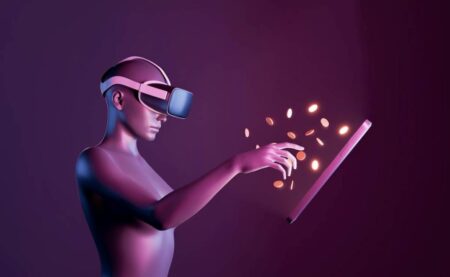Web 3.0 is the most recent or emerging phase of the Internet’s evolution, as its name implies. The foundation of Web 3 or Web 3.0 is the idea of building a completely decentralized ecosystem. This emerging field of technology believes that the issues facing the modern Internet and online ecosystem can be resolved by utilizing the power of artificial intelligence, machine learning, and cutting-edge technologies like blockchain.

Web 1.0
Web 1.0 was the early Internet that persisted until about 2000. At first, websites were just places where people could read what was on servers and interact with them in simple ways. In addition to e-commerce websites like Amazon and eBay, there were search engines.

Web 2.0
Web 2.0 emerged following the turn of the century. It was a lot more collaborative, a lot more capable, and a lot more interactive. There are several technical explanations for this, not the least of which is the rapidly increasing bandwidth that is now available to users and servers. Because of this Web generation, we now have smartphones and mobile computing. Collaboration was possible because Web 2.0 could support almost real-time interactions. This also included graphic multiplayer games and social media sites like Facebook and Twitter. Along with that, it saw the introduction of Big Data and the machine learning algorithms that combed through it.

Web 3.0
Web 3.0 is defined by intelligence. This intelligence can be seen not only in interactions between users and websites but also in interactions between software. There are additional factors as well. Numerous factors contribute to the differences between Web 2.0 and Web 3.0.

Digital Identities
Another innovation born from the blockchain is digital identities, which may end up being the most significant aspect of Web 3.0. The point is that Web 2.0 is rife with cybercrime—dark deeds of every kind, from click fraud to identity theft.
It happens because the connection between the two computers was improperly authenticated and is currently unable to be authenticated. Here’s what I want to say:
Because of Web 2.0, a server cannot be sure that the client software accessing it is what it purports to be—a browser run by a recognizable human being. A browser, on the other hand, has no way of knowing whether the server or the files it is accessing are the correct ones.
Micropayments
There are several strategies for making blockchain crucial to Web 3.0. Bulletproof digital IDs and a distributed file system are the two that have been mentioned thus far. Its most important contribution may be the ability to make cryptocurrencies and, in particular, the use of these currencies to make micropayments.
This is caused by how inexpensive cryptocurrency transactions are. The cost of a credit or debit card transaction is calculated in the non-blockchain world as a percentage of the value plus a fixed amount (let’s say 10 cents). Payment is made by the vendor. So, it’s unlikely that stores will accept credit cards for purchases of less than $10 worth of goods.
Trust
Automated trust is one argument put forth as the blockchain’s most significant contribution. Creating a network of trust goes beyond the security the blockchain can provide through digital IDs.
Some blockchains make it possible to build “smart contracts,” which are connected to the blockchain and run when a certain blockchain is triggered. event. The important point about smart contracts is that the program code is the contract.
As a result, smart contracts are far more certain than legal contracts. The legal system, which is not always reliable and varies from place to place, is used to make sure that legal contracts are kept. A legal contract challenge’s outcome is never guaranteed.
The complete reliability of smart contracts, however, cannot be disputed. A simple way to think of a smart contract is the flow of products through a supply chain. An RFID tag that can be read on goods is used to dispatch them and provide location information. When the goods get to certain places, the smart contract can automatically pay for import duties, storage, and transportation. As a result, payments can be counted on to happen as expected.
Web 3.0: When Will It Arrive?
There is no particular day on which a new technological generation is born. Even the launch of Web 1.0 did not have a specific date.
It might have started when the first browser was made available in a usable state. However, there weren’t many websites at that time. So, you could say that it came about around the same time that there were more and more websites. But in reality, it didn’t happen until the first search engines came into existence. You might counter that it happened when the first real e-commerce websites went live, instead of at that time.
Its gradual emergence is the key point. The development of Web 2.0, which includes social networks, multiplayer games, and big data algorithms, also took some time.
Web 3.0 will remain unchanged.
Maybe one day you’ll wake up and discover that your browser is a collection of bots that perform incredibly helpful tasks for you, that you have a Digital ID, and that you can use the Internet to your advantage. You’ll have the right to say, “Oh, this is Web 3.0,” when that occurs.













